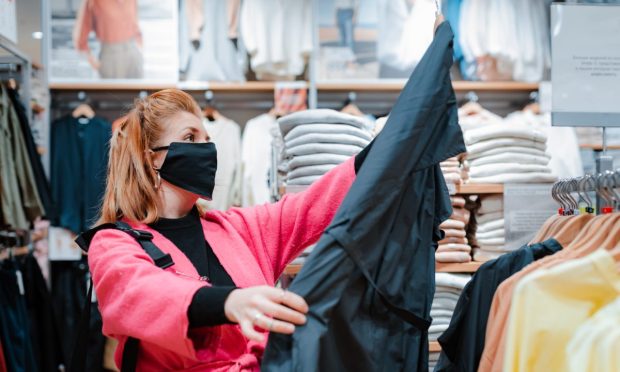Consumers Still Have ‘Appetite to Spend’ as Omicron Dip Seen as Temporary

Amidst a surge in the omicron variant of COVID-19 and a weaker-than-expected slump in December retail sales, pessimism has gotten the best of many consumers and shaken their confidence for the year to come, but TD Bank Head of Retail Card Services Mike Rittler is not one of them.
“There’s an appetite to spend,” Rittler said in an interview with PYMNTS. “There’s still a lot of money that people have, and personal balance sheets are still pretty strong.”
He noted that throughout the pandemic, people have paid down debt and saved more.
“That’s still a dynamic that’s out there,” he said. “There’s certainly capacity to spend.”
Rittler predicted that as the news of omicron continues to improve, as we “get over the hump” and get case counts back down, foot traffic will rebound, and shopping and buying will come back to where we expect.
“I would say for 2022, we’re still very optimistic that we’re going to see strong year-over-year growth in sales,” he said, adding that we will also likely see more balance between online and in-store buying.
Blip Versus Burst
Rittler’s outlook was also echoed by Commerce Secretary Gina Raimondo, who said business leaders are indicating to her that they feel the dip from omicron is a short-term event, rather than a long-term change of course.
In a weekend interview with Yahoo Finance, Raimondo said “business leaders see the problem as short term. Folks are beginning to say, ‘It feels like we are peaking, and going to start to come down the other side of the curve.’”
It’s an outlook shared by Rittler, who likened the late December/early January lull to a hangover from the news that plagued the holidays and saw the 1.9% drop in retail sales last week.
Read more: Late Q4 Omicron Surge Sees December Retail Sales Slumping 1.9%
“We still stand by our fall survey that showed 70% of consumers said they were likely to make purchases of $500 or more in the next six months,” he said, which TD Bank classifies as being a major purchase.
How to Pay
Another aspect underpinning Rittler’s retail rebound thesis is the fact that there are so many different ways for consumers to pay for purchases right now that can meet their changing budgetary and confidence criteria.
“Consumers have lots of ways that they can pay for goods,” Rittler said, whether that’s cash; general purpose credit cards; private-label credit cards; promotional financing; buy now, pay later (BNPL); or other innovations that have come through the FinTechs.
“Each of those provides something different, whether it’s convenience or budgeting or rewards or loyalty,” he said. “Whatever it may be, each of those different payment vehicles speak to a consumer in different ways.”
On the flip side, this variety also carries different benefits and purposes for retailers too, he said, noting that merchants will use the different payment methods to drive behavior to increase loyalty to meet their customers’ needs.